C u l t i v a t i o n m e t h o d
C u l t i v a t i o n m e t h o d
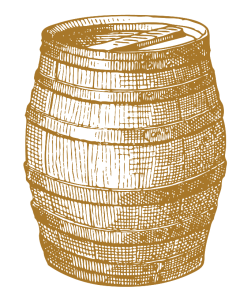
agriculture with a future
O r g a n i c a n d s u s t a i n a b l e
Organic farming is the most sustainable way to produce food. The idea of a circular economy accompanies our daily work. Organic farming plays a key role in this. Our own compost production, the cultivation of green plants and the keeping of migratory sheep in the vineyards are our ideas of a form of agriculture suitable for grandchildren. This form of cultivation enables us to produce vibrant wines and sparkling wines from vital and fertile vineyards.
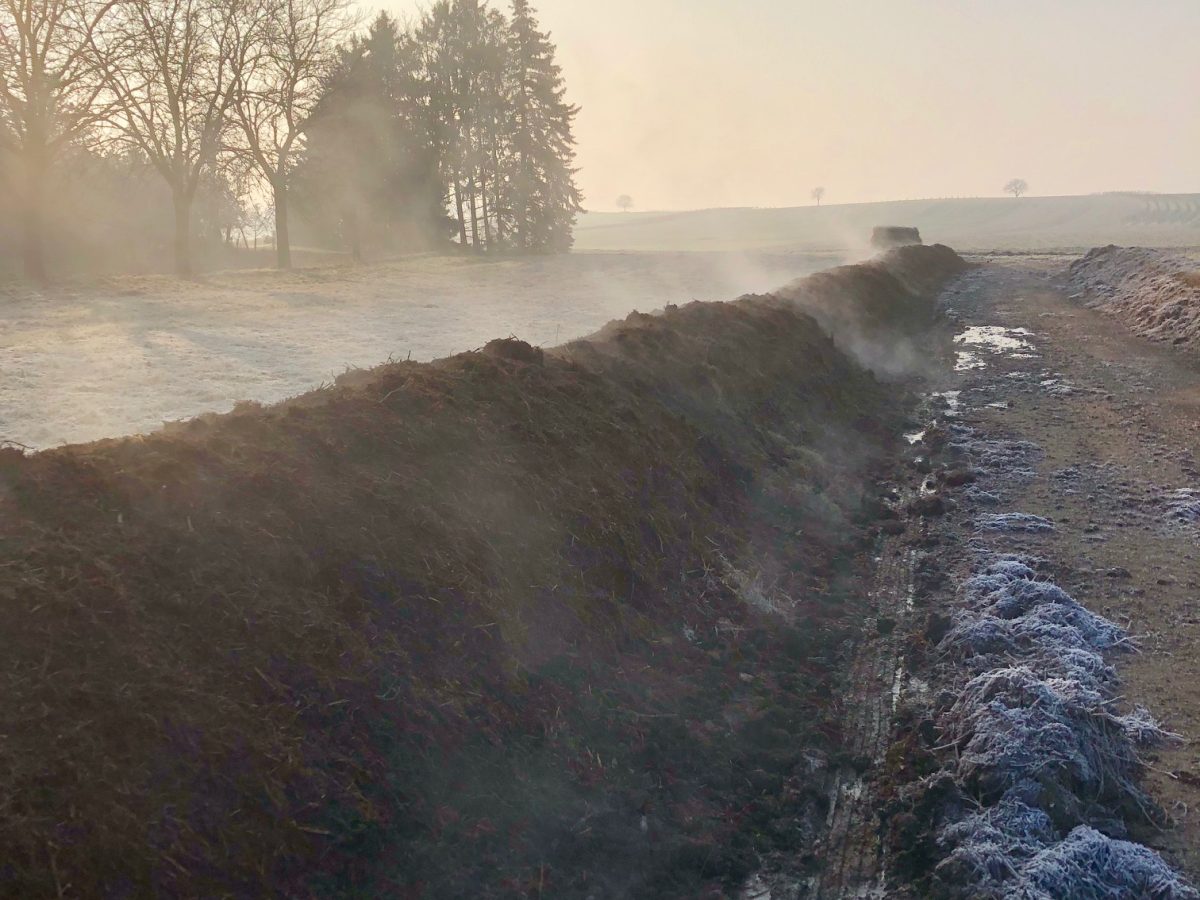
Produce your own fertilizer
C o m p o s t m a n a g e m e n t a n d h u m u s f o r m a t i o n
C o m p o s t m a n a g e m e n t a n d h u m u s f o r m a t i o n
To preserve our soil and to create an optimal nutrient supply for our vines, we only apply organic fertilizer in the form of compost in the vineyards. A few years ago, we decided to produce this fertilizer ourselves. In the fall, the grape pomace after pressing, green cuttings from fallow land, straw, horse manure and biochar are mixed together. The microorganisms in the various components heat the compost up to 60° C and transform “manure” into valuable compost. By returning the organic materials to the cycle, we increase the humus content and make a valuable contribution to climate protection by storing large quantities ofCO2 from the air in our soil.
Sheep and wine in symbiosis
V i n e y a r d g r a z i n g
A project close to Markus’ heart is becoming an integral part of the company’s operations and is making an extremely positive contribution to biodiversity in the vineyards. Away from monoculture, towards multiple benefits and diversity.
Vineyard grazing in the form of transhumance has been successfully practiced in our vineyards and fallow land for almost 10 years. The flock of sheep consists of ancient and endangered livestock breeds, with many helpful advantages for us. The sheep are small, robust, partially horned, have a natural shedding pattern and are simply beautiful to look at.
Through the hoof prints and manure, the animal influence has a very strong effect on soil life and plant diversity. This symbiosis increases the number of microorganisms, microbes and earthworms.
The form of transhumance allows us to move from one vineyard to another without stress. Working in harmony with nature, animals and people is an extraordinary feeling that makes us feel very positive, despite the increasingly severe weather events.
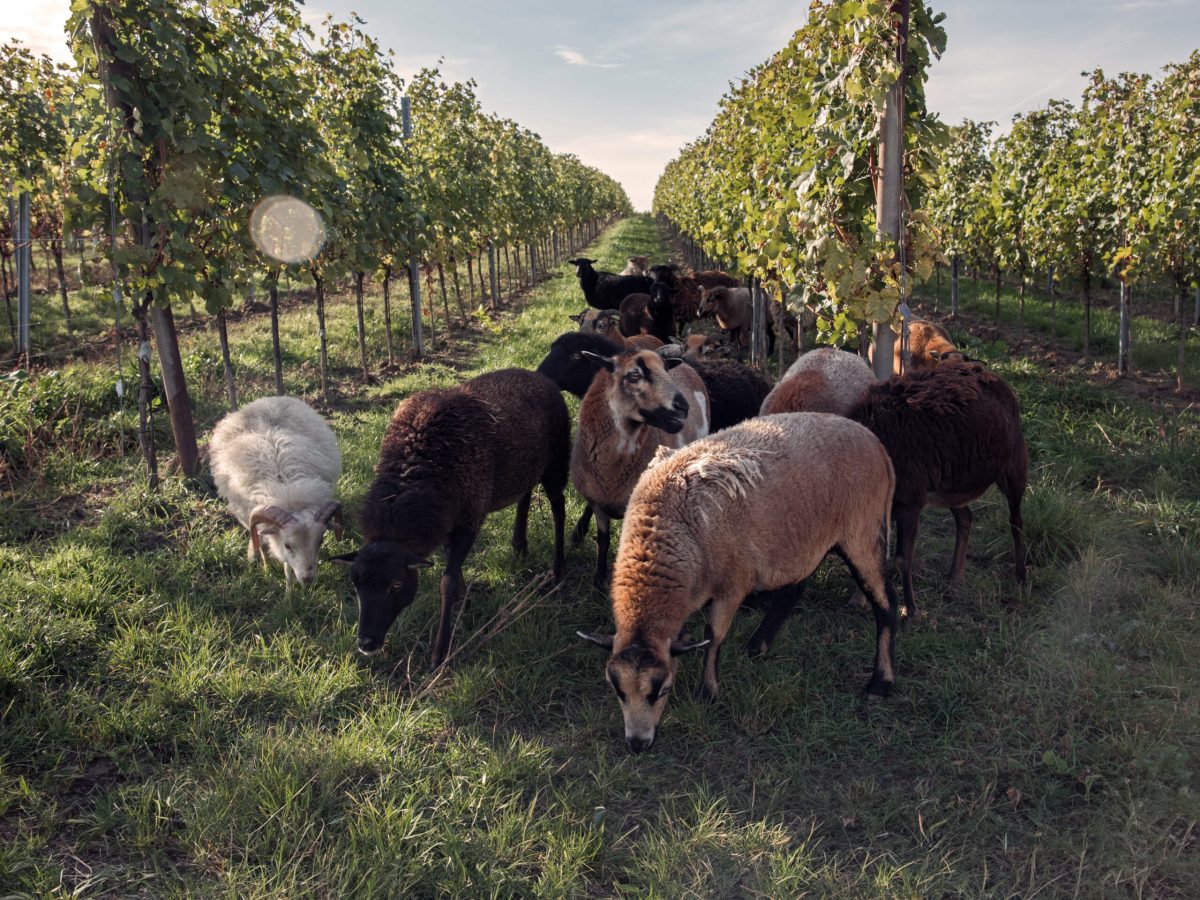
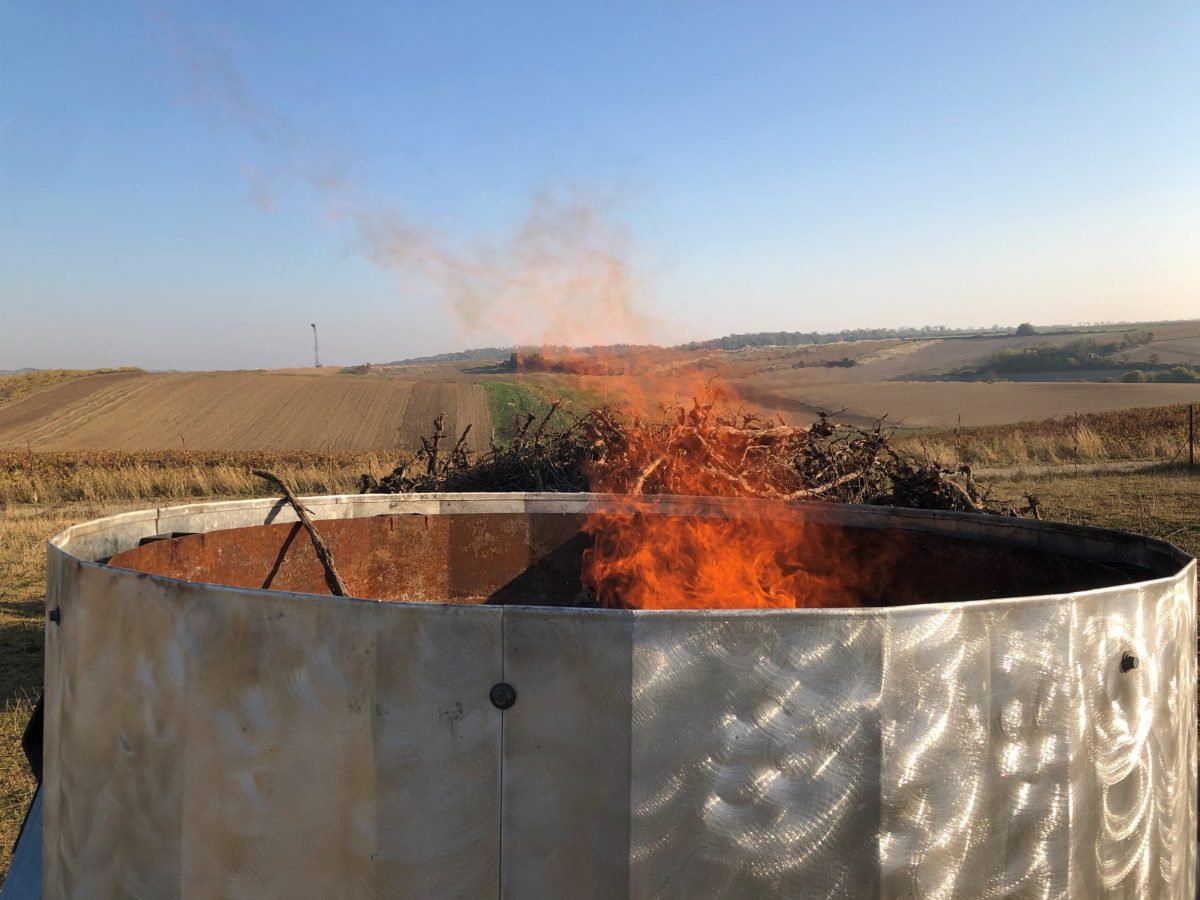
Floors for generations
B i o c h a r p r o d u c t i o n w i t h K O N - T I K I
B i o c h a r p r o d u c t i o n w i t h K O N - T I K I
A valuable component of our compost, and the associated humus build-up, is the charcoal obtained from lignified plant parts.
In our pyrolysis oven – the so-called KON-TIKI – wood is degassed under low oxygen conditions and burns at over 600° C to produce biochar. It is important that we only use diseased vines and dead wood. The process is completed by flooding with water. This is the only way to prevent the charcoal from disintegrating into ash and the storedCO2 remains bound and is not released into the atmosphere. The result is a charcoal product with an enormous inner surface on which we can enrich nutrient and hydrogen molecules by means of composting. An ingenious solution to counteract climate change. The aim is to keep the soil fertile in the long term in order to provide a basis for life for future generations. The model here is the Terra Preta principle, which has been researched in the Amazon region, among other places, and which has provided fertile farmland for over 1000 years.
Valuable splendor of color
G r e e n i n g m a n a g e m e n t a n d b i o d i v e r s i t y
G r e e n i n g m a n a g e m e n t a n d b i o d i v e r s i t y
Colorful and beautiful to look at are the various greening plants that we sow between the vines. However, they have an even greater benefit for our soils and that is within the soil. Rooting allows the soil to absorb rain better and prevents erosion. Certain plants are also proven suppliers of nutrients, such as clovers – so-called legumes – which bindCO2 from the air, convert it into nitrogen and thus enrich the soil. This nitrogen is important for our vines to grow well. To prevent the soil from drying out during hot and dry periods, the greenery is rolled and forms a natural evaporation protection on the surface in summer. All in all, this plant diversity provides a natural habitat for many beneficial insects such as bees, insects and birds. The colorful display of flowers is also a visual enrichment for us at work in the vineyard and, of course, for cyclists and hikers.
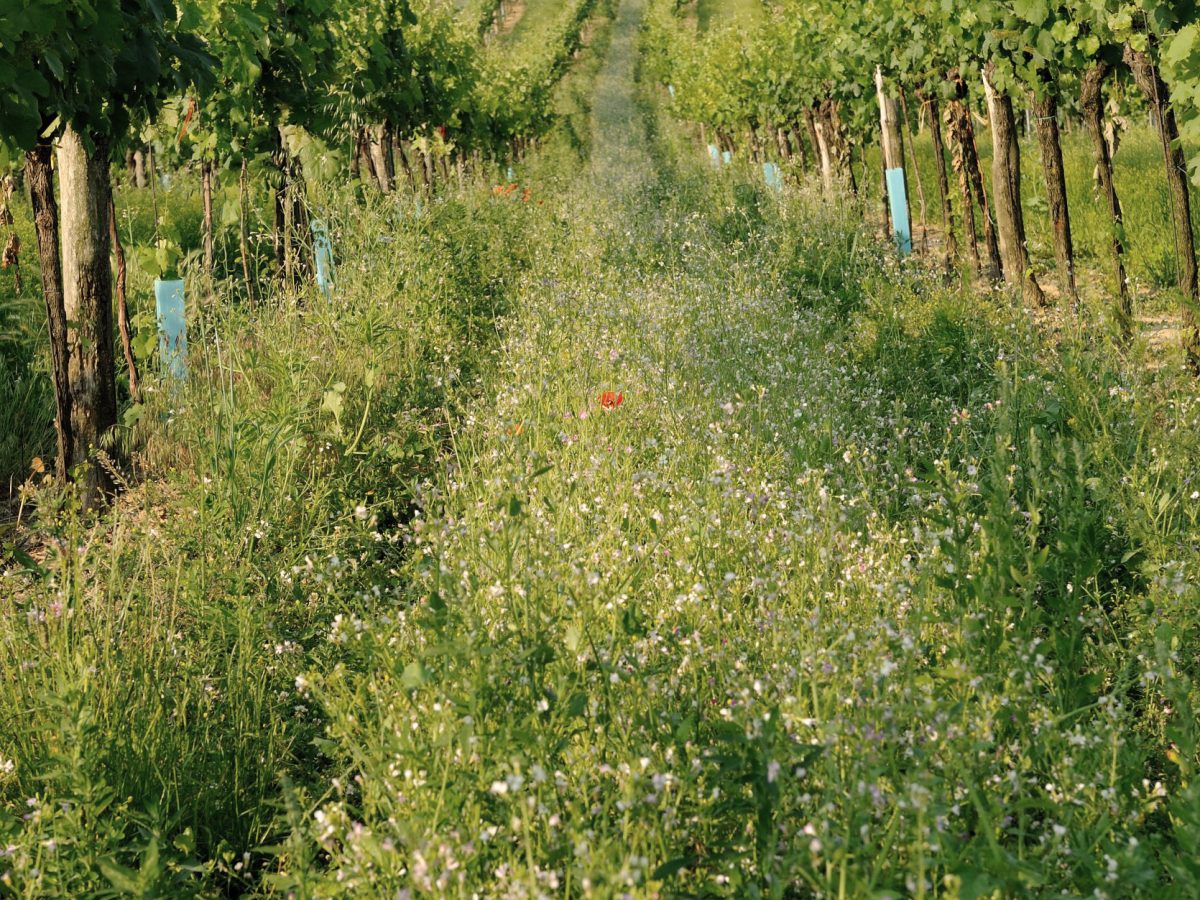
From the vineyard to the bottle
Wine cellar
Taubenschuss is a monolith in the Weinviertel wine landscape and has been known for decades for dry, regionally typical wines with an unmistakably dense character. The secret lies in the naturalness and for this reason the wines are bottled with the character of the respective vintage.